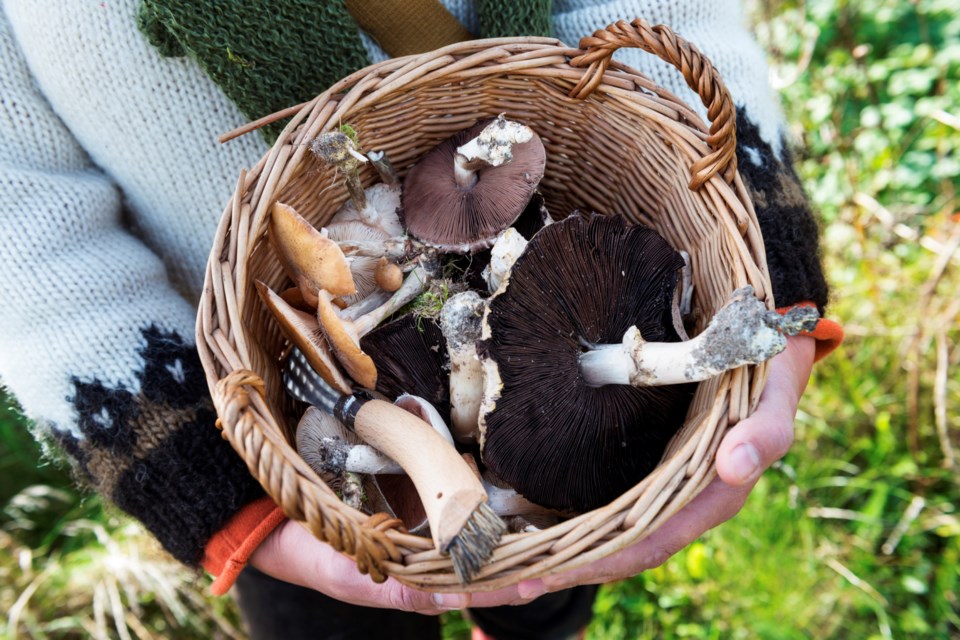Foraging foods has become a local urban trend, and for us Vancouverites, it’s easy to get into nature and find our next meal. You can literally go off the beaten path (or on) and grab a free lunch. Nature is so full of edible abundance!
There is something so wonderfully primal about going back to the hunter-gatherer stage we evolved from (well, mostly). These days, we do our gathering at the grocery store and someone else does our ‘hunting’. Convenience wins for most of us.
While more and more people get into the local sustainable food movement, foraging for food has become immensely popular, and there are tons of resources out there that can help to guide you along the way. There are restaurants offering foraged foods on their menus, and companies like West Coast Wild Foods that sell locally-foraged products. This beautiful city/province/country of ours is so full of food, we just need to know where to look and what to look for to take advantage.
Foraging is a skill that has been passed down from generation to generation, a tradition that was based on survival, and in some parts of the world it still is. It’s not only a great way to collect food, but it’s also a humble way to reconnect with nature. Here is what you can find in our beautiful wilderness…
Mushrooms
There are good mushrooms and there are bad mushrooms, and when I say bad, I mean slow-painful-death bad (or quick depending on the mushroom). It is not as fun as Alice in Wonderland may have led you to believe. But there are a variety of wild edible mushrooms out there if you know where to look and what you’re looking for. Oyster mushrooms, blue chanterelle and cauliflower mushrooms are just a few of the varieties that can be found easily and safely identified (although I encourage you to take an educated tour which are available all over the city before you dive into mushroom picking head-on). Wild mushrooms are high in copper, selenium and even have some vitamin D. Don’t go picking in BC Parks, however, as its illegal to forage there.
Rosehips
If you want a high concentrated dose of vitamin C, then rosehips are your go-to guys, but only in it’s natural fresh form, as it’s vitamin C content is destroyed in its dried form and declines rather quickly during storage. Rosehip is the round portion of rose flower just below the petals and contains the seed of the plant. The outer part is what you want; the hairy seeds on the inside might give your tummy an ache or two.
Blackberries
It’s almost that time of year again, when you can walk down nearly any alley and fill a bucket of fresh blackberries. I had never even tasted a blackberry until I came to Vancouver, and now I am part of this yearly phenomenon. Blackberries are not only tasty but are also high in vitamin C as well as antioxidants, and are great for your immune system and heart function.
Nettles
These little green leaves have a bite! You will want to wear gloves to gather stinging nettles – their name suggests why. They are easy to identify and find around BC, and they are also a great beginning for a newbie forager. These delectable greens are not only super versatile culinary speaking but are also high in vitamins A and C, iron and calcium. They peak in the spring, so get your gloves on and go for a walk.
Dandelion
This versatile weed gets a bad rep, but as long as you are picking from a place that is not sprayed heavily with pesticides, then you can enjoy the leaves in a salad, the root as a great liver and there’s also dandelion wine. Yum!
Nettle Pesto
3 cups fresh nettle leaves
4 garlic cloves
¾ raw unsalted cashews
¼ cup olive oil
½ tsp Himalayan salt
1 tbsp lemon juice
¾ cup parmesan or asiago cheese, shredded (optional)
• Dump fresh nettles in a pot of boiling water for one minute.
• Strain well and get as much water out as possible.
• Add nettles to blender, with garlic, pine nuts, olive oil, sea salt, lemon juice and cheese.
• Pulse until smooth and creamy; salt to taste.
• Mix with some pasta noodles and enjoy!



